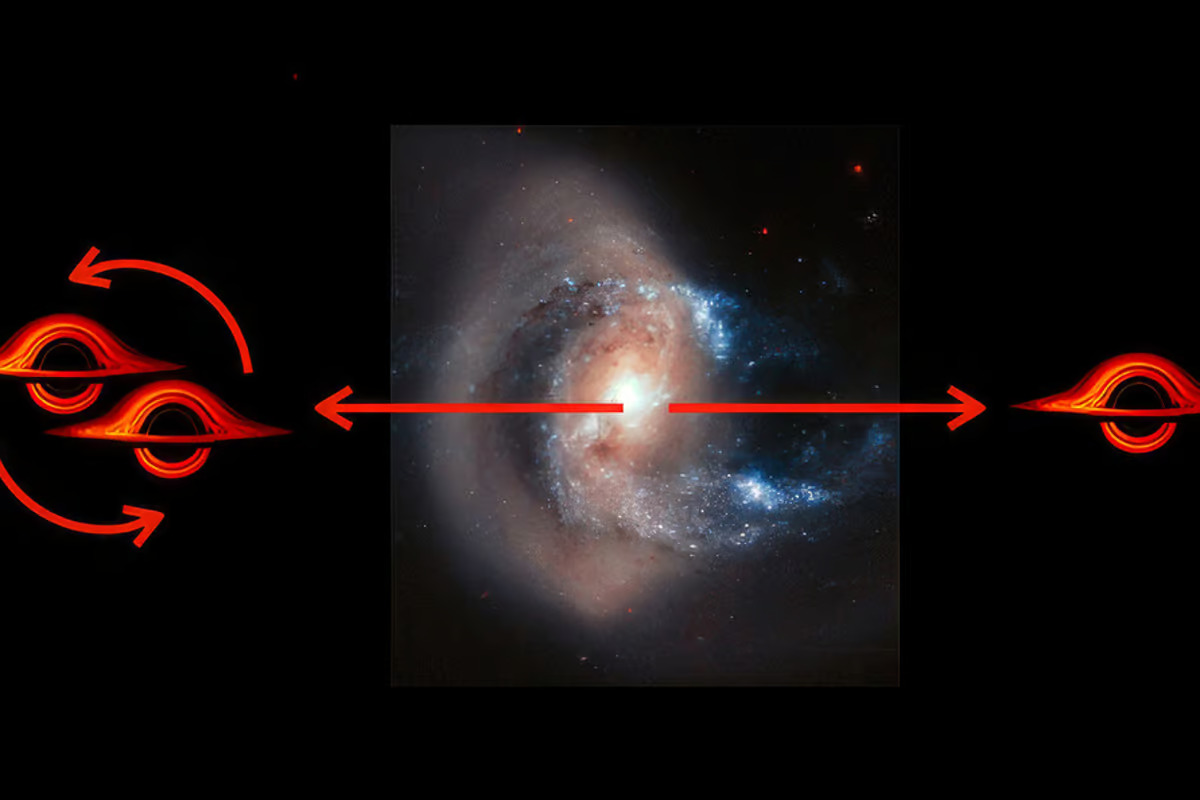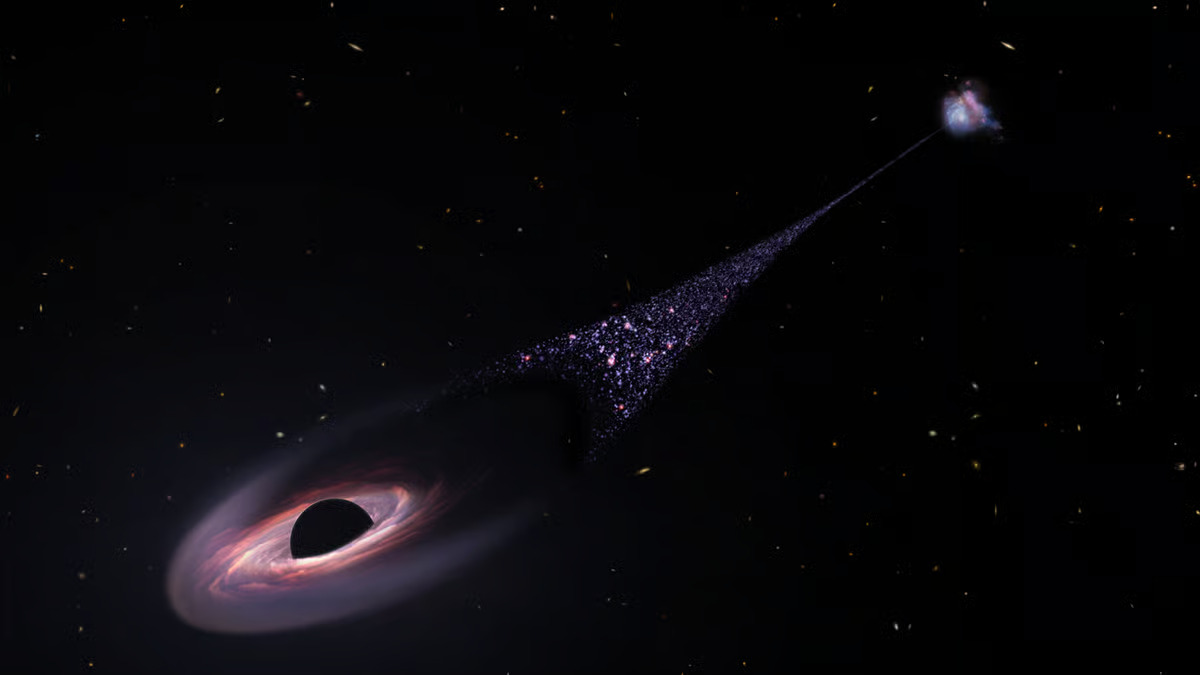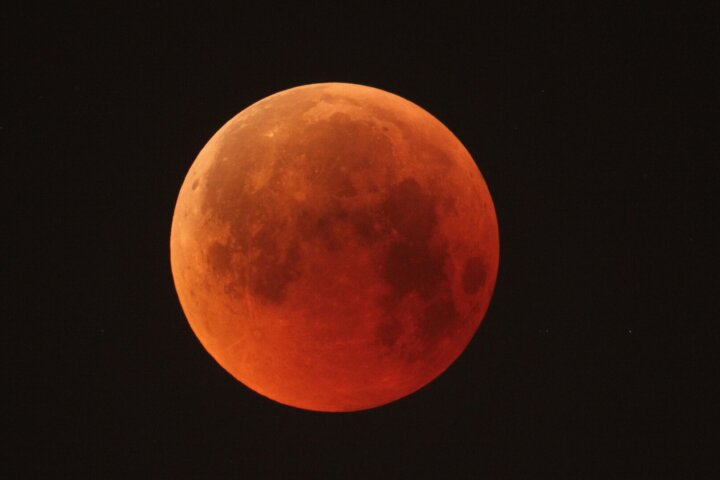 A diagram illustrating the proposed story of how three supermassive black holes ejected each other from their galaxy – one in one direction and two in the opposite direction. NASA, NAOJ, and P. van Dokkum
A diagram illustrating the proposed story of how three supermassive black holes ejected each other from their galaxy – one in one direction and two in the opposite direction. NASA, NAOJ, and P. van Dokkum
–
Telescope images often need a little cleaning up to confirm that things they see exist out in space and aren’t just artifacts of light, like lens flares, reflections or cosmic ray interference. So when astronomers first saw a long streak of light on some images from the Hubble Space Telescope, they assumed it would disappear after the usual image processing was applied.
But to their surprise it didn’t, indicating that what they were looking at was in fact a 200,000-light-year-long line stretching out of a galaxy roughly 7 billion light-years away. This space oddity wasn’t something astronomers had ever seen before, so the team studied it closer to figure out what it was.
And the origin story they came up with is an incredible one. A supermassive black hole with the mass of about 20 million Suns was violently ejected from its galaxy, leaving a bright wake trailing back to its former home.

The evidence for this story starts at the leading edge of the line, farthest from the galaxy, where a bright lump of light seems to be coming from ionized oxygen. The team suggests this is a shockwave in intergalactic gas as the black hole zips through the cosmos.
Although we might be inclined to associate black holes with destruction, this one is actually engaging in a spectacular act of creation. Traveling at speeds of about 1,600 km (1,000 miles) per second, the black hole is moving way too fast to slurp up much matter. Instead, it’s shocking and compressing gas, which then cools and coalesces into brand new stars behind it. The wake, then, is a thin corridor of baby stars stretching all the way back to the galaxy.
So what would cause a supermassive black hole to fly out of its home galaxy? Only other supermassive black holes, the team says. The hypothesis goes that two galaxies merged about 50 million years earlier, creating a binary system of black holes at the center of this new galaxy. This remained stable for a further 10 million years or so, before a third galaxy joined the party, complete with its own supermassive black hole. But of course, three’s a crowd, and the more complex gravitational interactions sent one of the black holes flying out of the galaxy.
Intriguingly, there’s some circumstantial evidence for this story, the team says. Such a calamity would have ejected the other two black holes in the opposite direction – and so far there doesn’t seem to be any sign of an active black hole remaining at the center of the galaxy. A strange feature seen on the exact opposite side of the galaxy could be where the other two are now hiding.
To confirm the hypothesis, or figure out what’s really going on, further observations will be needed. The plan is to examine the system with the James Webb Space Telescope and Chandra X-ray Observatory in the near future.
The research was published in the Astrophysical Journal Letters.
Source: Hubble
–






















